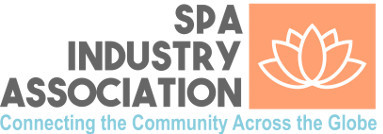
Marketing is an incredibly important part of business, but it’s also complicated. For business owners who aren’t in the marketing industry, finding the right tools and strategies to boost brand awareness and draw in new customers can be difficult. There is one foundational principle of marketing, though, that doesn’t need a complex approach to target it effectively. That’s the buyer’s journey.
The buyer’s journey is a three-step path that takes people from the discovery of your brand all the way to making a purchase. Let’s take a look at how you can leverage your spa’s marketing to appeal to people in each stage of this journey.
Awareness
The first journey stage is awareness. In this stage, people have an idea of what their problem is but might not have nailed down any specifics yet. For example, they might think “I have too many knots in my shoulder” or “I could use a good pore scrub.” They know something is bothering them, but haven’t quite identified how it’s causing a problem in their life.
In this stage, the customer experience is all about discovery. You want to help potential customers clearly outline their problem and show them a variety of solutions that your brand offers. Maybe you have a blog post about problems that tight shoulder muscles can cause or how clear skin boosts confidence.
The approach in this stage is simply to educate new leads. You want them to see that you know what you’re talking about and have plenty of ways to help them find the solution they’re looking for. A key element in every awareness stage marketing approach is a call to action. This call should move them into the next stage of the journey so you can keep fostering their interest and trust in your brand.
Consideration
In this stage, customers are thinking about the solutions you’ve presented to them and will hopefully make a decision on one. This is where product pages and service descriptions can be invaluable to moving someone through their buyer’s journey. They’re looking for more specific information about all their options so they can make an educated decision about the best course of action.
One way to help people work through this stage is to present different topics they should consider before purchasing. For example, if they’re looking for a massage to address their shoulder problem, you could discuss the different types of massages your business offers. Talk about the benefits of deep tissue versus hot rock massages and list which conditions each treats best.
At the end of this stage, a potential customer should have their choices narrowed down to just a few that might all meet their needs. This is when you move them into the decision stage.
Decision
The final stage of the journey is where they make their choice and hopefully make a purchase too. This stage is all about the details. Likely, your customer has chosen one or two services that are incredibly similar, so you need to show them how they differ. Speak to specific problems they address and niche benefits they offer. This can help customers make the distinction between two services that seem the same.
Another important element of this stage is making it easy for them to take the next step. Once they’ve decided on a product, make sure it’s easy for them to purchase. This might mean a big “buy now” button on the service page on your website or the ability for your staff to accept payments and book patients over the phone. Try to identify any obstacles your customers face when they’re ready to purchase and eliminate them.
Conclusion
The buyer’s journey is only three steps, but it can often take customers months to work through each stage. Be patient with your potential clients and help them to move through the stages any way you can. Focus on these three aspects of their journey and provide information that supports where they are in their buying process.



